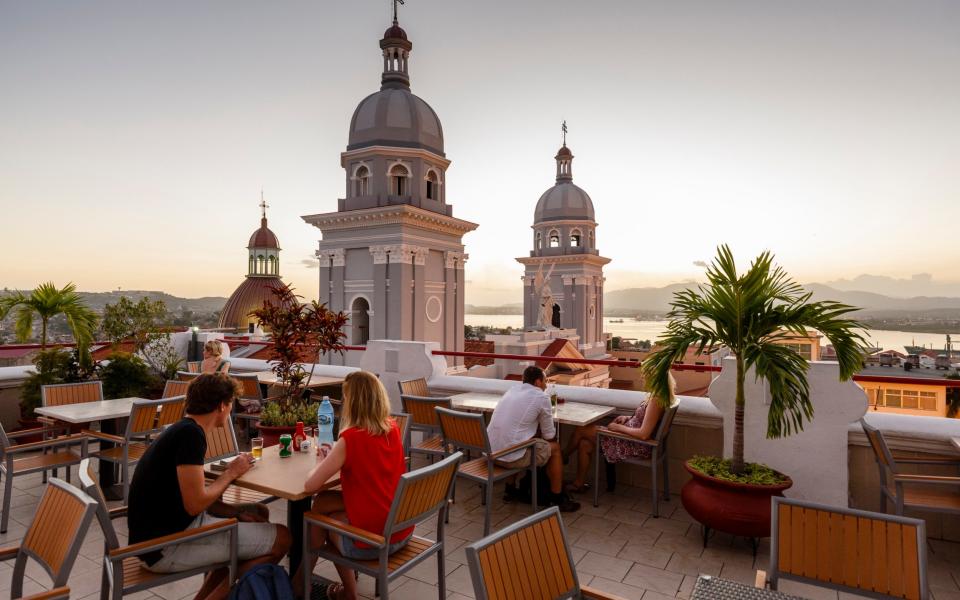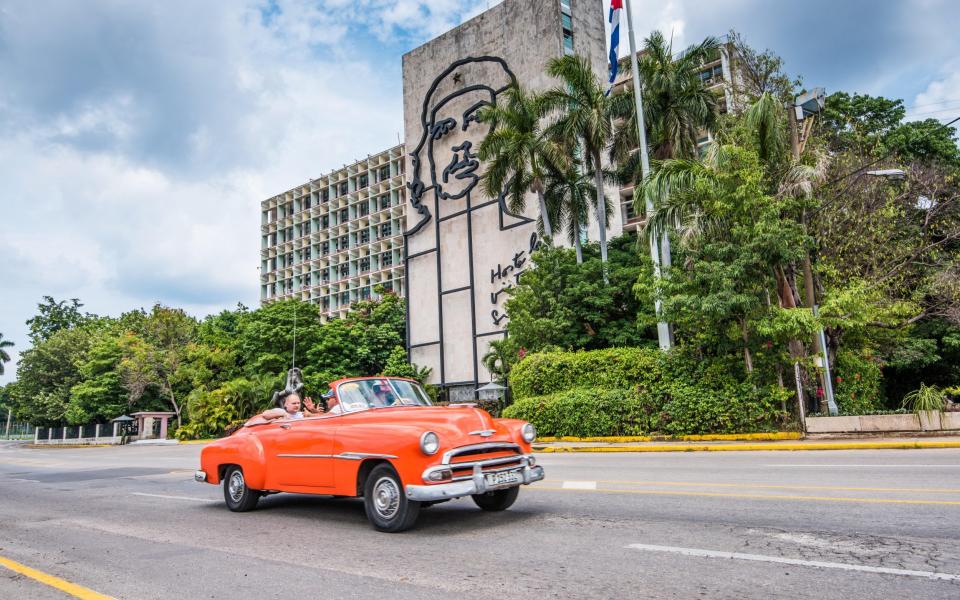A couple are remonstrating at the American Airlines counter in Havana’s Jose Marti airport, before being silenced by Cuba’s ubiquitous expression of exasperation, a sweeping hand.
“You’re not getting on the flight,” the clerk says. “Go to the US embassy.”
“Don’t go to the embassy,” I say as I take their place. After I check in, we chat. They are married, he from Texas, she from New Zealand, and have been holidaying in Cuba before heading to a family reunion near Austin.
She is travelling on an ESTA, the US electronic visa waiver that allows easy access to the US for citizens of 40 countries, mostly Europeans but also Japanese, South Koreans, Australians and New Zealanders.
“You didn’t know your ESTA would be revoked if you visited Cuba?” I ask. They shake their heads.
While many Caribbean countries have seen a spike in tourist numbers against pre-pandemic figures – there have been 11.1 per cent more visitors to the Dominican Republic in the last year than in 2019 – Cuba has emptied.

According to Aruba-based Tourism Analytics, the number of Germans, Brits, Italians and French visiting this, the largest of the Antilles, has dropped between 62 and 69 percent over the same period.
Partly this is due to ugly headlines, of protests against the Communist regime fuelled by shortages of food and gasoline, but tour operators and small business owners say “the ESTA issue” is also having a profound effect.
“My core business was Europeans, Australians and some New Zealanders,” says Fiona Wilson, who runs Casa Los Mangos, a bucolic guest house on the outskirts of Trinidad in Cuba’s south with her husband, Ossiel Ramirez. “Now it’s mainly US citizens. The ESTA mess is prohibiting people’s ability to support the Cuban people – and is devastating for small businesses.”
The problem began, stutteringly, on January 12, 2021 when then-president Donald Trump returned Cuba to the US State Department’s lists of state sponsors of terror (SSOT). ESTAs cannot be used to visit the US if the traveller has been to one of the countries on the list (say, Iran and North Korea).
At first it wasn’t enforced and seemed part of Trump’s push to overturn the detente forged by Barack Obama in 2016. But then people began being turned away from the airport. The State Department claims the designation is due to Cuba hosting members of Colombia’s ELN guerrilla group, but the view in Havana is that it’s part of Washington’s 63 year-old campaign to dislodge Cuba’s communist regime.
“It’s the US exporting its embargo on Cuba to the rest of us,” says Toby Brocklehurst, one of the island’s most long-standing and best-loved tour operators.
“Ironically US citizens can travel freely to Cuba,” he adds. Flights now leave Miami daily for every major Cuban city, the Havana crossing is 44 minutes and often costs less than $100.
Sir George Hollingbery, Britain’s ambassador to Cuba, says the island’s place on the SSOT list is “desperately unfair” but he’s happy visitors are coming from the US. “Our experience is that those who come are profoundly shocked at what the SSOT designation is doing to the people here, quite apart from making it harder for tourists to visit.”
What he means is that Cuba’s economy is in tatters, and this isn’t helping. Cubans who rely entirely on low government wages face real hunger. In the “bodegas”, where rations are distributed, eggs haven’t been seen since August, coffee since April, pork has disappeared, and rice and beans are proving harder to come by.
This doesn’t affect tourists unless they head for the big government owned and, crucially, supplied resort hotels that necklace the island. Those who stay in private guest houses – as with the burgeoning population of Cubans with money – are eating better than ever because small importers have been allowed to start operating.

The lack of tourists is changing Havana. The renowned dancer Lia Rodriguez opened Bleco last year. She designed the bar to appeal to locals. “It was the best strategy to think about the people who live in Cuba, whether foreign or Cuban,” she says. “Ninety nine percent of our clients are local.”
Bleco is now scorchingly hip, first among equally fashionable joints such as Yarini and Coco Blue. Rita McNiff, of tour operator Like a Cuban, says: “It’s actually a great time to visit. All the best places to stay are available and everybody’s attention is on you.”
Other operators want to make clear that Washington isn’t banning visitors from visiting Cuba then the US. “If you have a US visa it’s fine to come,” says Johnny Considine of Cuba Private Travel. “This is all about the waiver.”
Sir George, the British ambassador agrees: “My message is that if travelling to the US is a big deal, getting a full visa may take a bit of time, but it isn’t hard and lasts for 10 years,” he says. Obtaining a US visa from the UK involves a scheduled appointment at the US embassy and costs $180 (£146) rather than $21 (£17).
“So plan ahead, forget about the ESTA issues, and come to Cuba. It’s an amazing place, unlike anywhere else you’re likely to visit.”
The couple at the airport have decided on a more controversial approach. They book a flight to Mexico City and another, separate flight to Texas. Not declaring their Cuba visit may break US immigration law, but, says the husband: “it’s worth the risk. Upsetting my grandmother would be much worse.”
TYT Newsroom


